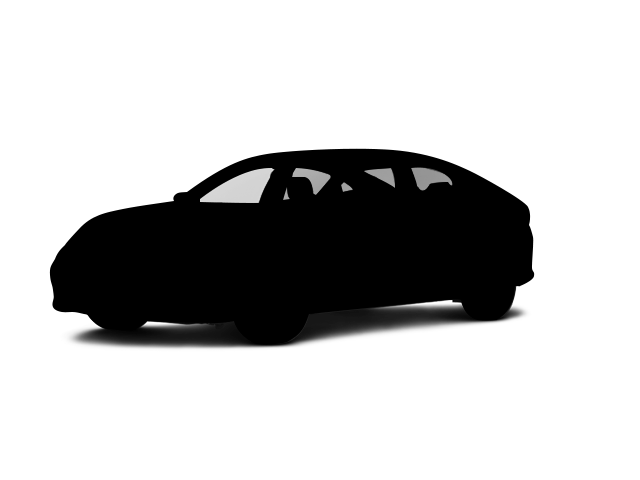The X5’s pre-crash front seatbelts will tighten automatically in the event the vehicle detects an impending crash, improving protection against injury significantly. The 4Runner doesn’t offer pre-crash pretensioners.
In a Vehicle-to-Vehicle Frontal Crash Prevention 2.0 test conducted by the Insurance Institute for Highway Safety (IIHS), the BMW X5 achieved a “Good” rating - the highest possible - for its performance in forward collision warning and automatic braking systems, demonstrating its excellent capabilities in preventing collisions. The Toyota 4Runner has not been tested.
The X5 has a standard PostCrash iBrake, which automatically applies the brakes in the event of a crash to help prevent secondary collisions and prevent further injuries. The 4Runner doesn’t offer a post collision braking system: in the event of a collision that triggers the airbags, more collisions are possible without the protection of airbags that may have already deployed.
Over 200 people are killed each year when backed over by motor vehicles. The X5 offers an optional Active Park Distance Control that uses rear sensors to monitor for objects to the rear and automatically applies the brakes to prevent a collision. The 4Runner doesn’t offer backup collision prevention brakes.
Both the X5 and 4Runner have rear cross-traffic warning, but the X5 has Cross Traffic Warning with Braking (automatically applies the brakes) to better prevent a collision when backing near traffic. The 4Runner’s Rear Cross-Traffic Alert doesn’t automatically brake.
For better protection of the passenger compartment, the X5 uses safety cell construction with a three-dimensional high-strength frame that surrounds the passenger compartment. It provides extra impact protection and a sturdy mounting location for door hardware and side impact beams. The 4Runner uses a body-on-frame design, which has no frame members above the floor of the vehicle.
Both the X5 and the 4Runner have standard driver and passenger frontal airbags, front side-impact airbags, driver and front passenger knee airbags, side-impact head airbags, front seatbelt pretensioners, plastic fuel tanks, four-wheel antilock brakes, traction control, electronic stability systems to prevent skidding, crash mitigating brakes, daytime running lights, lane departure warning systems, blind spot warning systems, rearview cameras, rear cross-path warning, driver alert monitors, available all wheel drive and around view monitors.
The National Highway Traffic Safety Administration does 35 MPH front crash tests on new vehicles. In this test, results indicate that the BMW X5 is safer than the Toyota 4Runner:
|
|
X5 |
4Runner |
|
|
Driver |
|
| STARS |
4 Stars |
4 Stars |
| HIC |
209 |
267 |
| Neck Injury Risk |
34% |
47% |
| Neck Stress |
308 lbs. |
438 lbs. |
|
|
Passenger |
|
| STARS |
4 Stars |
3 Stars |
| HIC |
342 |
367 |
| Neck Injury Risk |
35% |
57% |
| Neck Stress |
220 lbs. |
271 lbs. |
New test not comparable to pre-2011 test results. More stars = Better. Lower test results = Better.
A significantly tougher test than their original offset frontal crash test, the Insurance Institute for Highway Safety does 40 MPH small overlap frontal offset crash tests. In this test, where only 25% of the total width of the vehicle is struck, results indicate that the BMW X5 is safer than the 4Runner:
|
|
X5 |
4Runner |
| Overall Evaluation |
GOOD |
MARGINAL |
| Restraints |
GOOD |
GOOD |
| Head Neck Evaluation |
GOOD |
GOOD |
| Head injury index |
114 |
142 |
| Peak Head Forces |
0 G’s |
0 G’s |
| Steering Column Movement Rearward |
1 cm |
12 cm |
| Chest Evaluation |
GOOD |
GOOD |
| Hip & Thigh Evaluation |
GOOD |
GOOD |
| Femur Force R/L |
1.4/1.3 kN |
3.9/2.4 kN |
| Hip & Thigh Injury Risk R/L |
0%/0% |
1%/0% |
| Lower Leg Evaluation |
GOOD |
ACCEPTABLE |
| Tibia index R/L |
.41/.52 |
.95/.85 |
| Tibia forces R/L |
2.3/.8 kN |
5/2.9 kN |
The National Highway Traffic Safety Administration does side impact tests on new vehicles. In this test, which crashes the vehicle into a flat barrier at 38.5 MPH and into a post at 20 MPH, results indicate that the BMW X5 is safer than the Toyota 4Runner:
|
|
X5 |
4Runner |
|
|
Front Seat |
|
| STARS |
5 Stars |
5 Stars |
| Chest Movement |
.6 inches |
1.1 inches |
| Abdominal Force |
130 lbs. |
179 lbs. |
|
|
Rear Seat |
|
| STARS |
5 Stars |
5 Stars |
| HIC |
48 |
89 |
| Spine Acceleration |
30 G’s |
36 G’s |
|
|
Into Pole |
|
| STARS |
5 Stars |
4 Stars |
| Max Damage Depth |
14 inches |
20 inches |
| HIC |
308 |
507 |
| Hip Force |
796 lbs. |
895 lbs. |
New test not comparable to pre-2011 test results. More stars = Better. Lower test results = Better.
Instrumented handling tests conducted by the National Highway Traffic Safety Administration and analysis of its dimensions indicate that the X5, with its four-star roll-over rating, is 8.7% less likely to roll over than the 4Runner, which received a three-star rating.
The BMW X5 has achieved the Insurance Institute for Highway Safety’s (IIHS) highest rating of “Top Safety Pick Plus” for the 2025 model year. This distinction is based on its exceptional performance in IIHS’ rigorous battery of safety tests. Specifically, it earned a “Good” rating in the latest, more stringent moderate overlap front crash test, a “Good” result in the updated side impact test, and a “Good” score in the revised pedestrian crash prevention test. The 4Runner is not even a standard “Top Safety Pick” for 2025.

